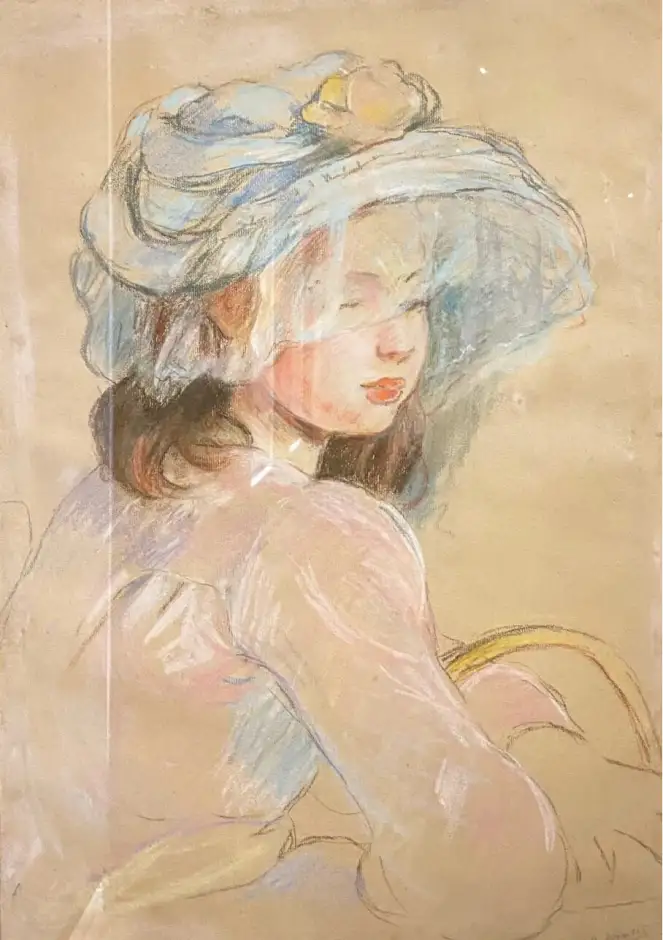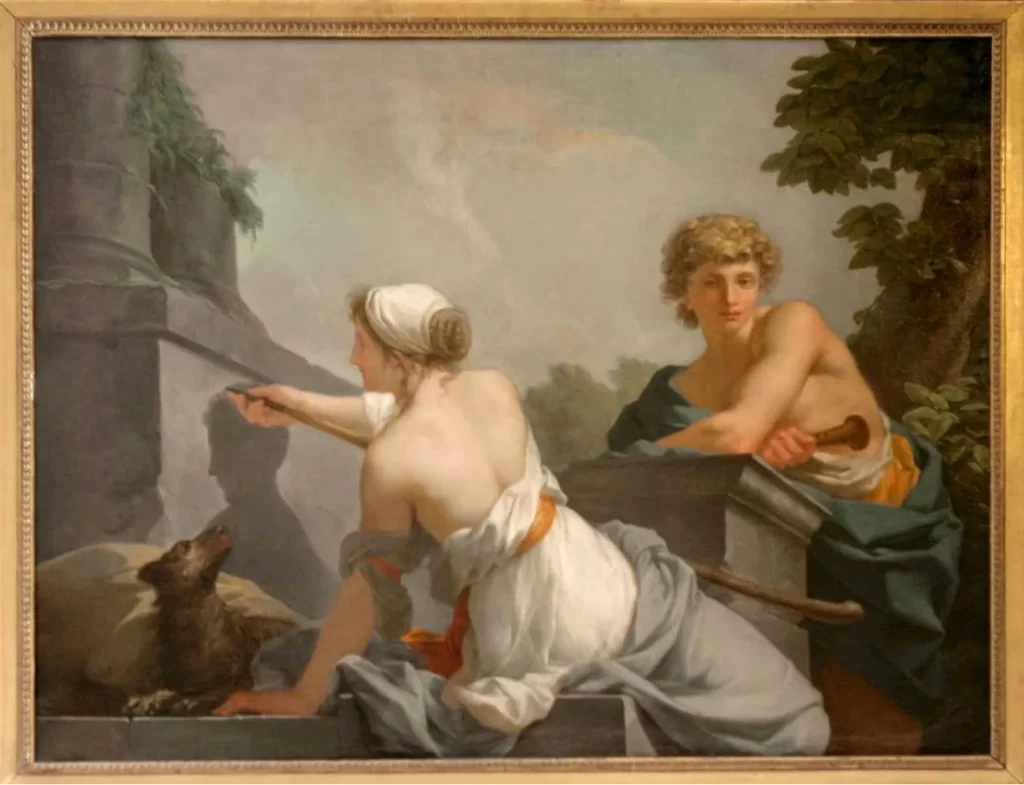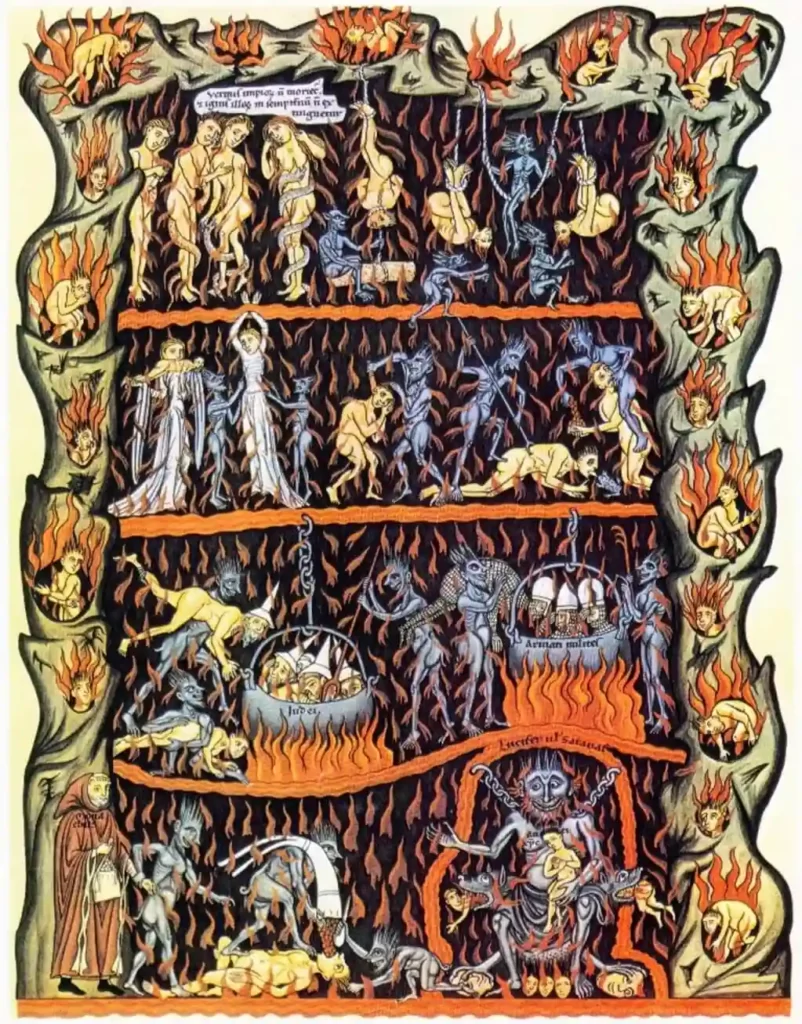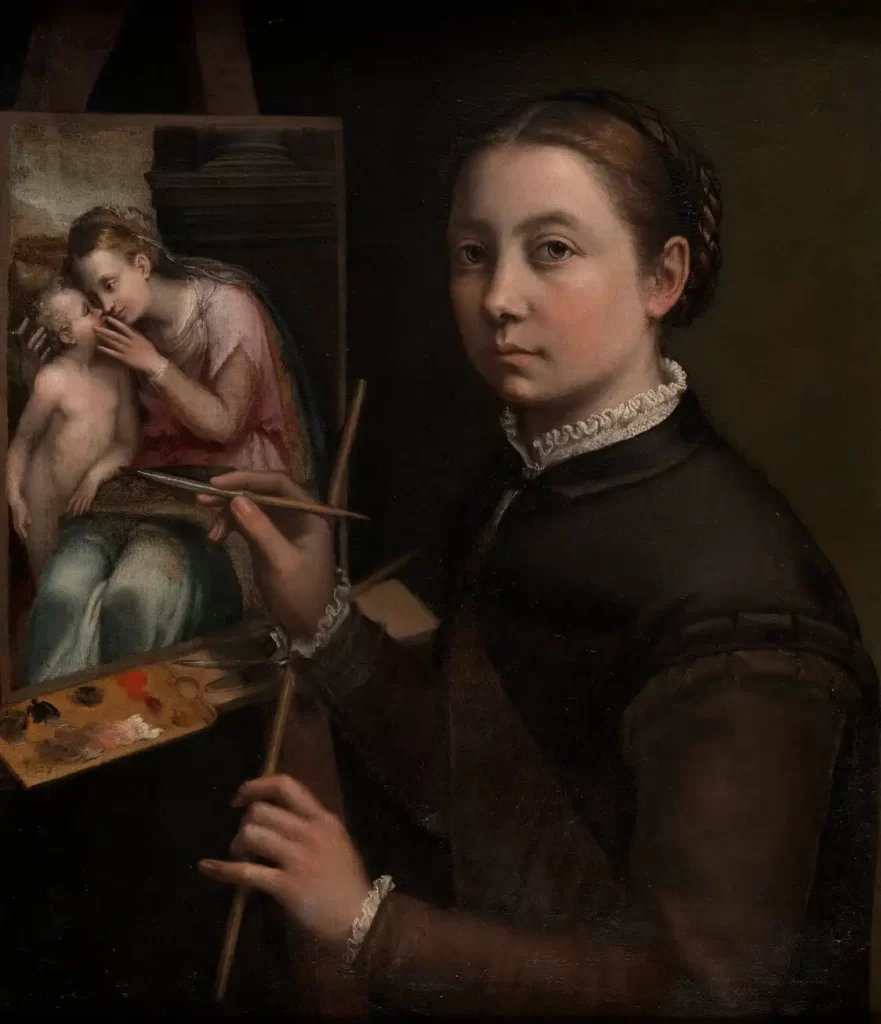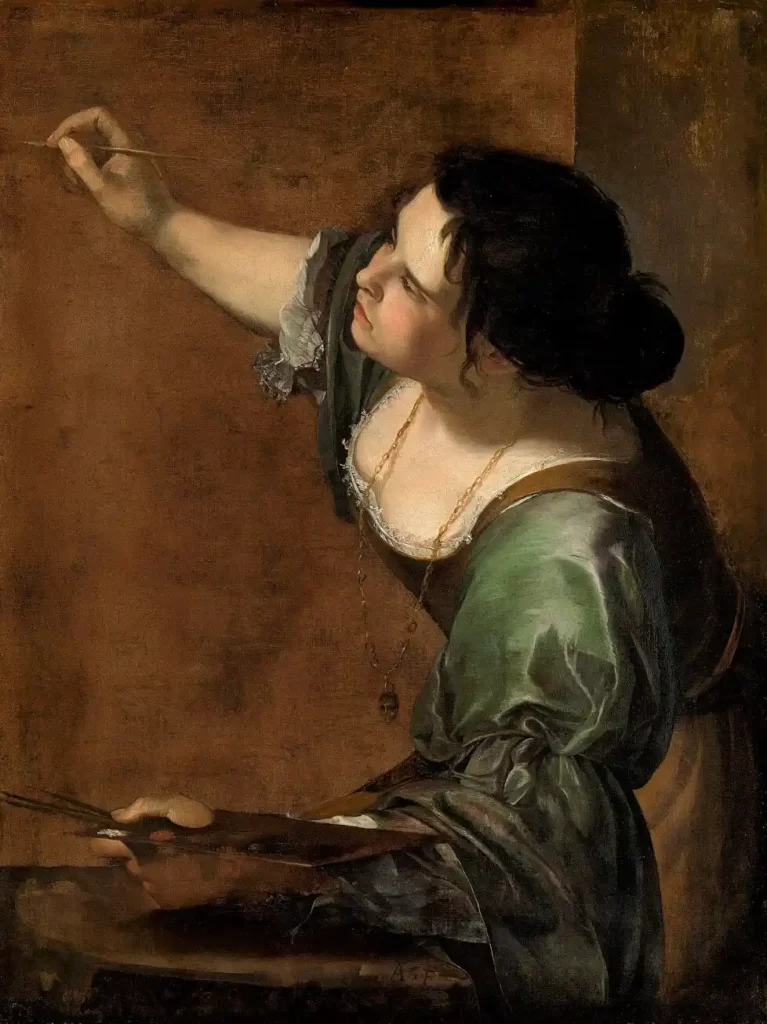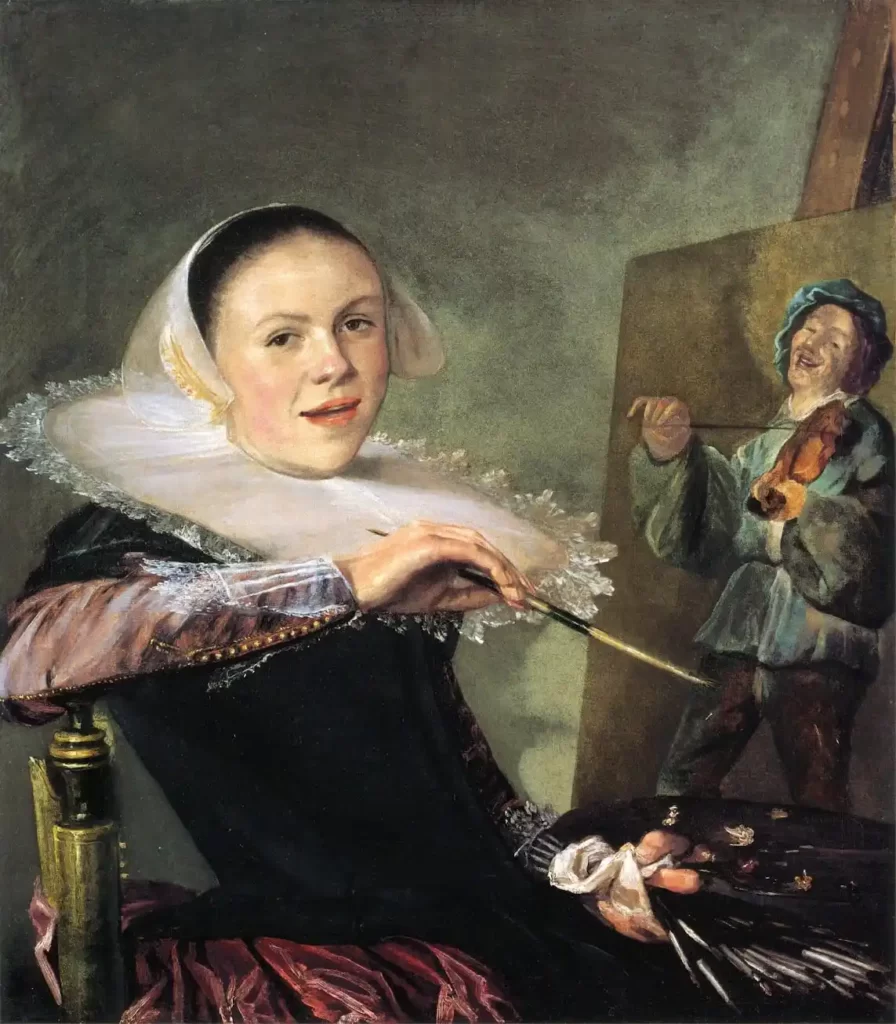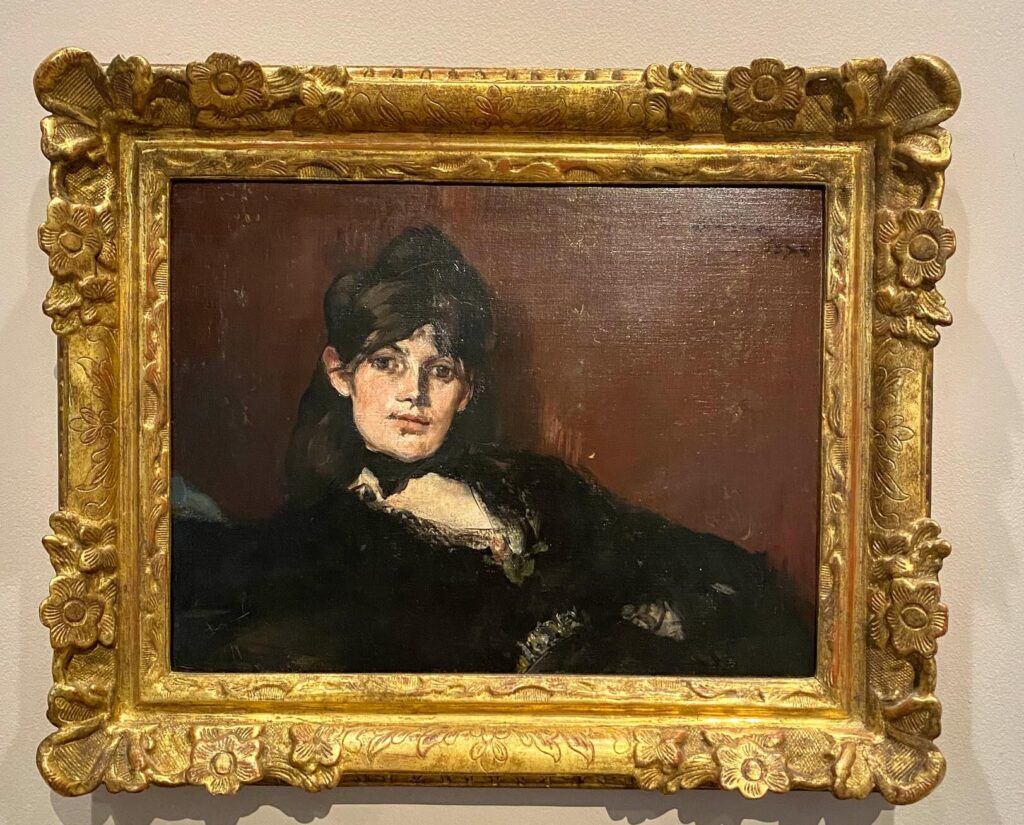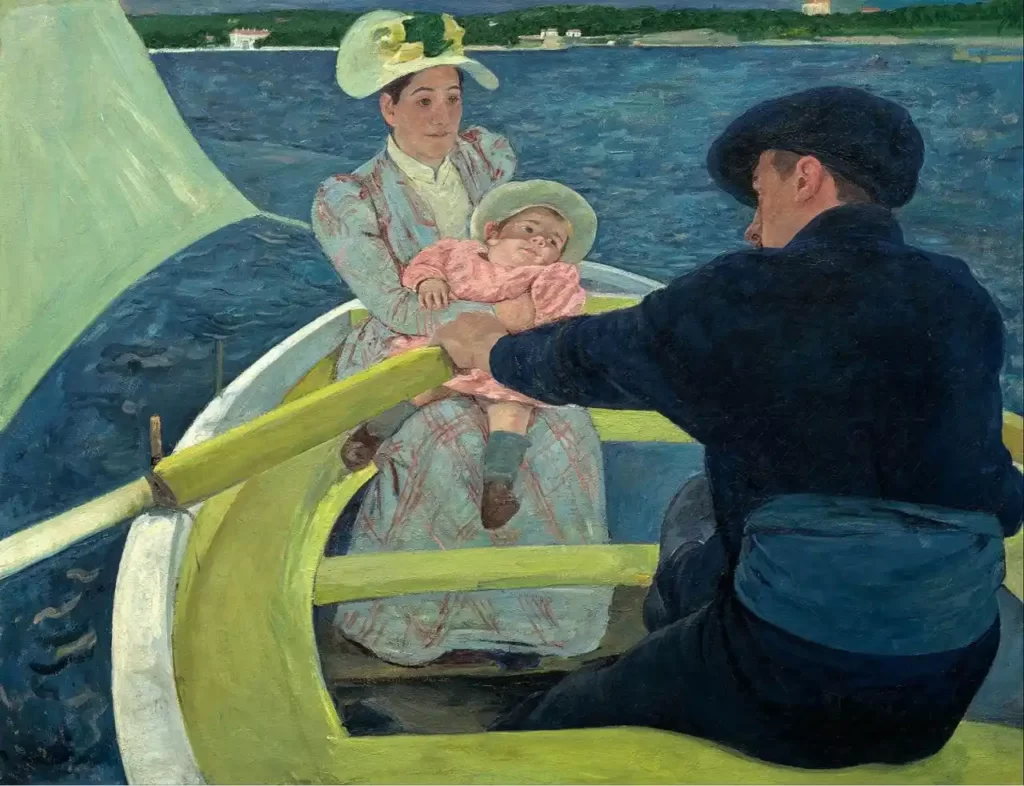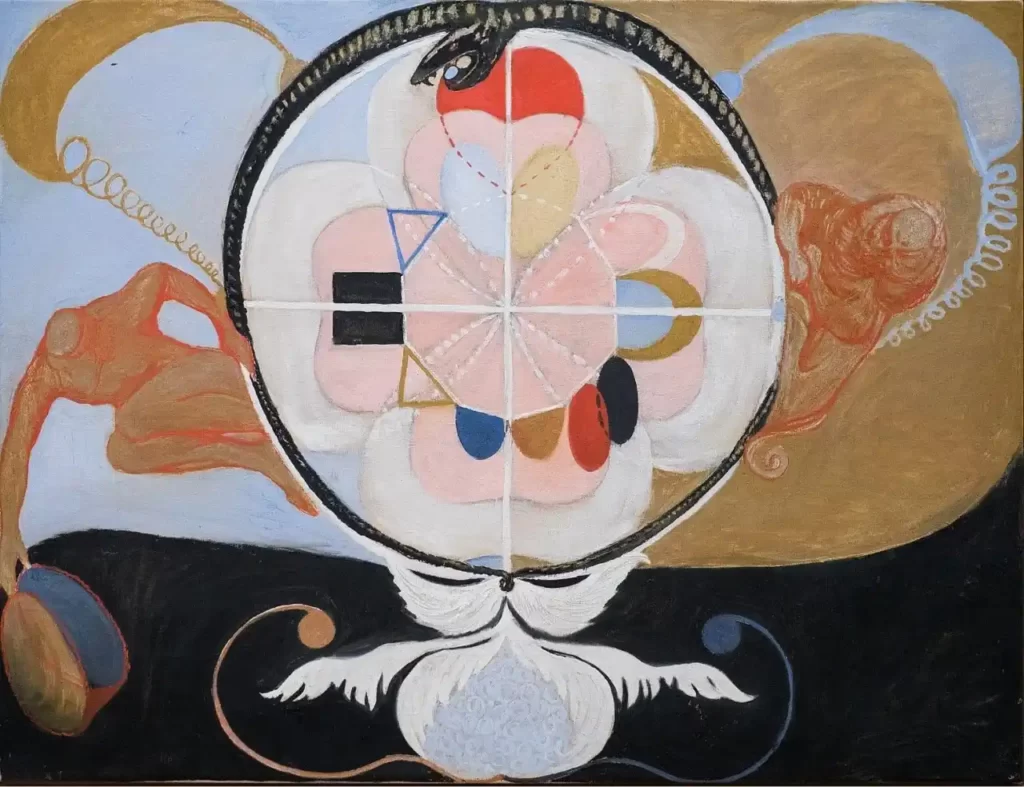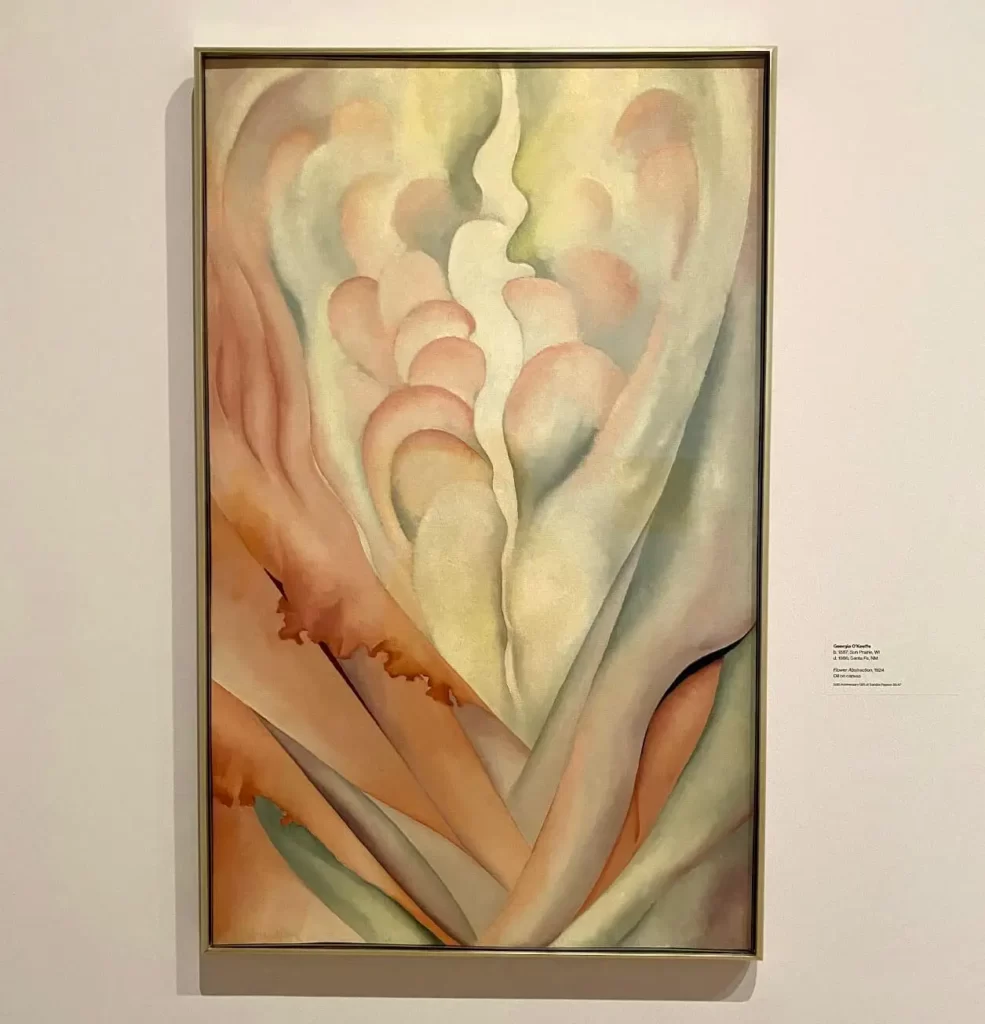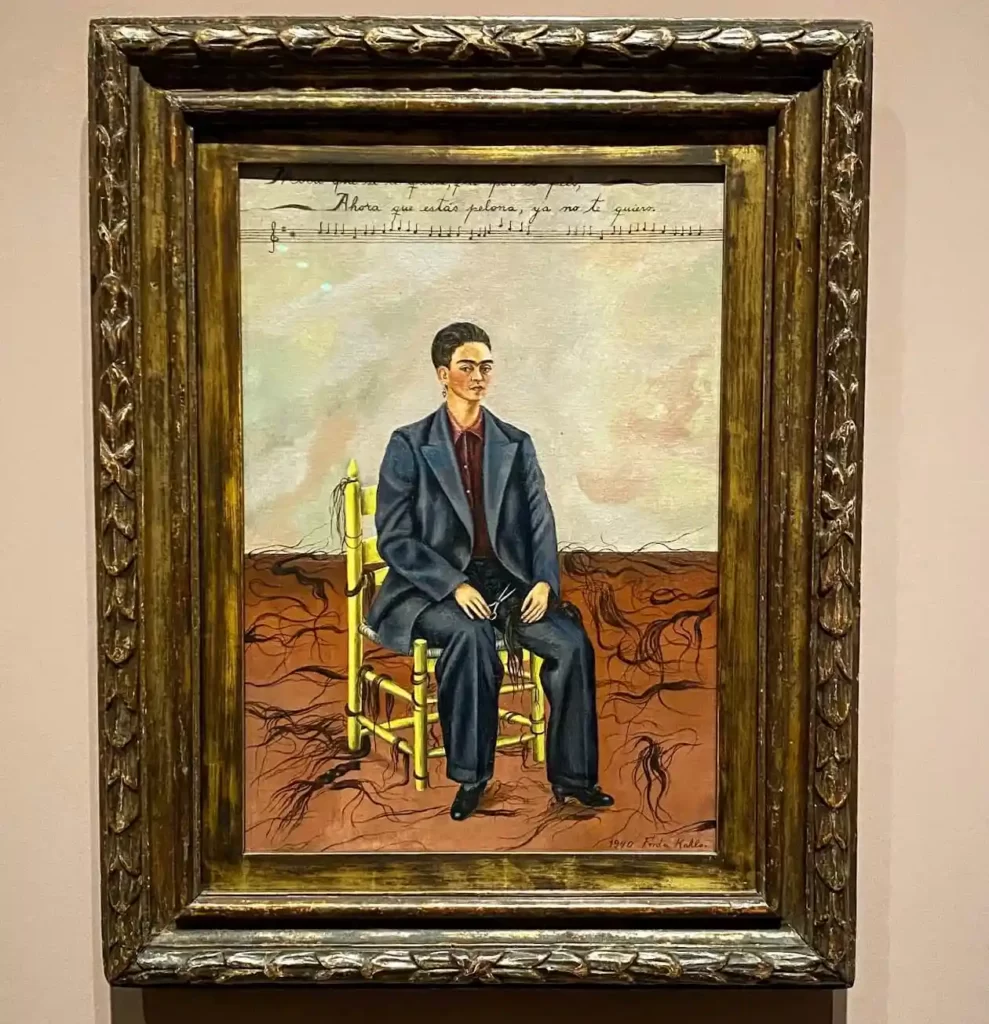How many female artists do you know? Although it may seem there are no women artists in history, that’s untrue. To celebrate International Women’s Day, I prepared an article about some of the most inspiring female artists you should know. I looked for leading artists from different periods in art history and curated some of their most interesting paintings here. Enjoy, and let’s celebrate women in art together!
Female artists in history
The lack of female artists in history has a lot in common with the way society treated women in the past. Women were mostly restrained to the house, so it was hard to have a career of any kind. That’s why it’s interesting that many female artists were daughters of famous male artists. That way, they were getting an education from their fathers at home.
Although women could learn to paint, that differed from the training men received. They learned how to be professional artists who would get commissions and earn money from their work. On the other hand, art and painting were always considered leisure activities for women. It had to remain a hobby for them.
Because of many social restrictions, it was also quite challenging for women artists to practice. During the Renaissance or Baroque time, it was inappropriate for women to see nudes. That’s why they couldn’t learn about the human anatomy. Women couldn’t go to restaurants, parks or museums alone in the late 19th and early 20th centuries. Something normal for their male colleagues, which was a way to observe nature or learn by making copies of famous historical paintings, wasn’t allowed for women. That’s why many of them focused on painting domestic scenes. It was the world that was available to them.
It was also very uncomfortable to paint in clothes consisting of a corset, a lumbering dress or a massive hat. Rosa Bonheur, for example, had problems when she started wearing male garments to be more comfortable around the animals she was painting.
Knowing all that, we should celebrate these pioneers, female artists that challenged the rules and worked in demanding conditions. They often couldn’t sell their work or were underpaid for it. But they opened the doors and set an example for future generations of female artists.
16 Inspiring female artists from history
Although there are many more inspiring female artists from history, I picked some that I consider the most influential and revolutionary in their work.
⤷ Read more: 15 Best exhibitions in European museums in 2023
1 – Kora of Sicyon (650 BC)
The life of women in Ancient Greece was mainly linked to the household. Although we know of some wealthy female commissioners of art, we don’t know of many women artists from that time. However, one of those few was Kora of Sicyon. She found her place on this list of female artists from history you should know about because she was the first recorded woman artist in Ancient Greece. And one of the earliest we know about.
She lived in the 7th century BC and was a daughter of a sculptor Butades of Sicyon. We know about her because she was mentioned by Pliny the Elder in his “Natural History” written in 77. Kora and her father made one of the first relief portraits in clay, debuting that art technique.
2 – Harrad of Landsberg (c. 1130 – 1195)
Harrad of Landsberg was an artist and a nun at the Hohenburg Abbey in the Alsace region in France. She was exceptionally well educated for a woman in the 12th century. She was an abbess for 28 years and is remembered to be very capable and loved in that position.
Her life work is “Hortus deliciarum”, a medieval manuscript and the first illuminated encyclopedia written by a woman. The work contained 336 illustrations. It was aimed at women in the abbey to be used in their education.
3 – Sofonisba Anguissola (c. 1532 – 1625)
Sofonisba Anguissola was an Italian Renaissance painter. She came from a noble family and got an outstanding education. Four of her sisters also learned painting; however, she was the most talented. Her working as an apprentice of established painters and learning that way set an example to generations of female artists to do the same. She was informally guided by Michelangelo, to whom she was introduced.
She was well-accepted during her lifetime and worked as a court painter for Spanish king Phillip II. However, Anguissola is known for her more intimate family portraits, landscapes and religious paintings. She influenced numerous younger painters like Anthony van Dyck, who visited her in Italy and made her portrait, Peter Paul Rubens, Caravaggio, and many more.
⤷ Read more: 10 Cultural spots to visit in Florence
4 – Artemisia Gentileschi (1593 – 1653)
Another famous Italian female artist, who was internationally recognised and could live out of her art, was Artemisia Gentileschi. She worked during the Baroque period. Her artworks depict women, mainly from the Bible or classical myths. Gentileschi’s father was a painter too, so she primarily learned from him. Although missing the formal education, later in her life, while in Florence, she learned how to read and write and familiarised herself with music and theatre.
She is also seen as a strong feminist because of her brave participation in a trial against a painter Agostino Tassi who raped her. Artemisia Gentileschi was also a traveller who lived in many places in Italy and even lived and worked in London at the court of Charles I of England later in her life.
5 – Judith Leyster (1609 – 1660)
Judith Leyster was a Dutch Golden Age painter living in the Netherlands during the 17th century. Although she was pretty popular during her lifetime, she was almost forgotten after her death. Her work was falsely attributed to her husband and another famous Dutch painter, Frans Hals. Done on purpose by the art collectors, they could earn much more if they assigned her artwork to a famous male painter like Hals.
She painted everyday life scenes typical for the Dutch art of the 17th century. Living in Haarlem for most of her life, she had a workshop with apprentices and many clients.
⤷ TIP: In 2021, her work and paintings of two more 17th-century Dutch female artists were included at the Gallery of Honour in the Rijksmuseum in Amsterdam. Those were the first paintings made by female artists ever exhibited there.
6 – Angelica Kauffman (1741 – 1807)
Angelica Kauffman was a Swiss Neoclassical painter. She mostly made historical paintings, portraits and landscapes. With a successful career in Rome and London, Kauffman was one of two female painters among the founding members of London’s Royal Academy in 1768. Her father was a painter, so she learned about art while working as his painting assistant.
She was multilingual, speaking French, German, Italian and English, and a talented opera singer. Kauffman lived and worked in different Italian towns before moving to London in 1765. There she became a renowned artist whose work today can be seen in museums all around Europe.
⤷ Read more: Best museums in Europe you have to visit
7 – Élisabeth Vigée Le Brun (1755 – 1842)
Élisabeth Vigée Le Brun is a French painter well-known as a portraitist of (mostly) women made in the Rococo and Neoclassical styles. Her father was a painter and provided art education to her daughter. She became famous early in her career as a portraitist of Marie Antoinette. Vigée Le Brun made around 660 portraits and many more paintings of different themes, making her a very productive artist.
One of her paintings, “Self-portrait with her daughter Julie” was displayed at the Paris Salon in 1787 and caused a scandal because she depicted herself smiling. Showing one’s teeth in paintings was forbidden in art. So, it caused a lot of drama among the Parisians. Because of her close connection to Marie Antoinette, following the French Revolution, she fled France. After that, she lived and worked in Italy, Austria, Russia, and Germany before returning to Paris twelve years later.
⤷ Read more: A trip from Paris – Fontainebleau Palace
8 – Rosa Bonheur (1822 – 1899)
Rosa Bonheur was one of the most famous female artists of the 19th century. A French Realist painter and sculptor mostly showed animals in her work. Her father was a painter, so, as was the case with many other female artists, he taught her about art. She learned by copying paintings of famous masters in the Louvre and by drawing animals around Paris.
Bonheur gained international success with her paintings, establishing her as one of the most famous painters of animals (animalière). At that time, she was among the first women to wear trousers and men’s clothes, claiming it was easier for her to paint around animals in male clothing. Bonheur wasn’t only important as one of the first professional female artists but also one of the first open lesbians during the time when it wasn’t legal to be one.
9 – Berthe Morisot (1841 – 1895)
Berthe Morisot was born in 1841 to a wealthy French family. Her parents were well-educated and members of the high French society. She received painting lessons as a child, together with her sisters. After moving to Paris with her family, Berthe Morisot would often go to the Louvre Museum and learn by copying art masterpieces. This is where she met other artists doing the same, like Claude Monet.
She was one of the most talented Impressionist painters. Her intimate paintings often give a peek into the private domestic life of women and children. She often used her family members as models and especially loved portraying her daughter and sister.
⤷ Read more: Art history lesson – Berthe Morisot
10 – Mary Cassatt (1844 – 1926)
Another inspiring female painter within the Impressionist movement was an American artist, Mary Cassatt. Although born in the US, she mostly lived in France. Like Berthe Morisot, she often portrayed women, mothers with their children and intimate domesticate scenes in her work.
Her family considered travel crucial for education, so she travelled from a young age. She is one of the first female artists on this list to study art formally by attending classes at the Pennsylvania Academy of Fine Arts. Although the school still needed to be equal for female and male students. For example, women couldn’t use live models. And in France, they still couldn’t apply to universities at all.
⤷ Read more: Impressionists in Paris
11 – Hilma af Klint (1862 – 1944)
Although artists like Kandinsky or Mondriaan are considered the first abstract painters, another lesser-known artist Hilma af Klint created the first abstract paintings at least around the same time, if not even earlier. She studied art at the Royal Academy of Fine Arts in Stockholm. Although she started her career as a landscape painter, later on, she experimented with symbolism, mysticism and abstraction in her artwork.
She worked within a group of five female artists called “The Five”, which combined art and spirituality. Inspired by her studies there, in 1906, she made her first series of abstract paintings.
12 – Georgia O’Keeffe (1887 – 1986)
Georgia O’Keeffe, also known as the “Mother of American Modernism”, is one of the most important American modern painters. She is well known for her compositions of enlarged flowers. Although O’Keeffe denied that on several occasions, art critics often referred to the symbolism in her work as that of female sexuality.
Besides creating art, she was also an art teacher at several schools and universities. O’Keeffe also received an honorary “Doctor of Fine Arts” degree from the College of William and Mary. She has also received an honorary degree from Harvard University.
13 – Sonia Delaunay (1885 – 1979)
Although born in Odesa, Ukraine, Sonia Delaunay spent most of her life in Paris. She founded a new art movement called Orphism with her husband, Robert Delaunay and some other artists. Within it, artists combined geometry and vivid colours.
Delaunay was the first living female artist to have a retrospective exhibition at the Louvre Museum in Paris in 1964. She worked extensively in set and costume design, applied art and fashion.
⤷ Read more: Love in art history
14 – Alma Thomas (1891 – 1978)
Alma Thomas was an African-American painter who was a member of the Washington Colour School art movement and Expressionism. She was the first graduate of the Art department at Howard University.
Although considered one of the most influential modern American artists today, it’s interesting that she started to paint full-time only when she retired in her late sixties. She described her way of working with colours this way:
Through colour I have sought to concentrate on beauty and happiness in my paintings rather than on man’s inhumanity to man.
15 – Tamara de Lempicka (1898 – 1980)
Tamara de Lempicka is one of the most famous Art Deco artists. Born in Poland, she spent most of her life in Paris and the US. She became world famous after the Art Deco exhibition in Paris in 1925 when her work was noticed by the editors of some renowned fashion magazines.
She made her career by painting portraits of celebrities, especially after she moved to the US. Lempicka’s work is still popular among celebrities. Some of her collectors are Madonna, Jack Nicholson and Barbara Streisand.
16 – Frida Kahlo (1907 – 1954)
Frida Kahlo was a self-though Mexican painter who became one of the most famous and influential artists of the 20th century. She’s well known for her self-portraits filled with symbolism. She had art shows in the US, Europe and Latin America and worked as an art teacher.
Frida Kahlo was also the first Mexican artist whose work was purchased by the Louvre Museum in Paris.
Art history wouldn’t be the same without the contribution of these fantastic artists. They started new art movements, pushed the boundaries and showed that to create great art, talent and hard work are all that matter. Hopefully, this list of the most inspiring female artists in art history will inspire you to research their work even more.


